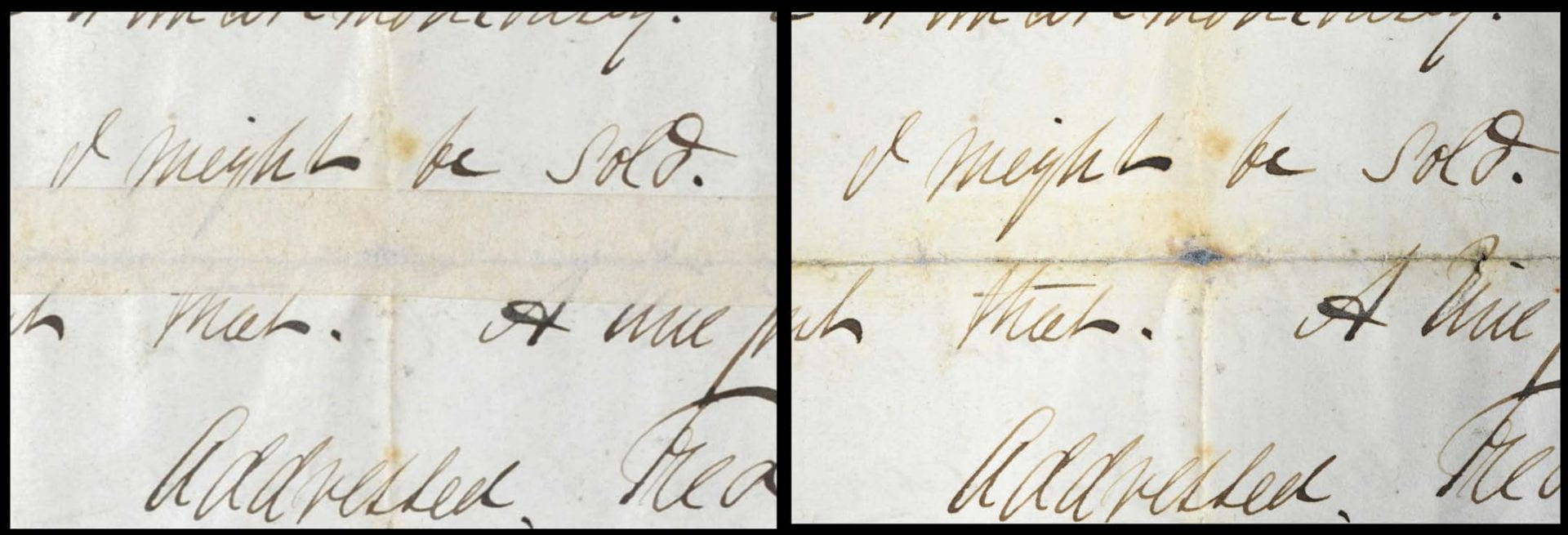Preserving These Documents for Posterity
Roger Williams, Book and Paper Conservator
Primary source documents are firsthand accounts created by the people living though the time that a scholar is researching. But paper documents are often fragile, and unless they are properly preserved, they can crumble away, taking the historical record with them.
To that end, the documents of the Frederick Douglass Collection underwent conservation treatment in the Libraries’ conservation lab during winter 2022. These items were previously mounted in a scrapbook when they were in a private collection in the late 19th century, and some pieces of the mounting papers were still adhered to the documents. The former owner had also mended some tears on the documents using thick paper that covered areas of text. Conservators and curators decided that these later additions—the mounting papers and mending papers—should be removed.
Scientific analysis, using Fourier-transform infrared spectroscopy, determined that the later papers were applied with a starch-based adhesive. This meant they could be removed using water.

The manuscripts are primarily written using iron-gall ink, the most commonly used handwriting ink between the 5th and 19th centuries. Iron-gall ink is highly water-sensitive, so we needed to keep the inks dry while we got the mounting and mending papers damp.
Gellan gum is a rigid polysaccharide gel, commonly used in food products as a thickener that conservators use to apply water to sensitive objects in a gentle, controlled manner. For the Douglass documents, strips of gellan gum were cut to the exact size of the papers being removed and laid on top of them.
This softened the adhesives and released the unwanted papers without wetting the documents themselves or disturbing the iron-gall ink.
Once the old mending papers were removed, they were replaced with new, minimal mends.

The paper used for the new mends is nearly invisible once applied; it is made of a combination of kozo (a type of Japanese mulberry) and nanocellulose. Like the old mends, the new ones were applied with a starch paste so they can be easily removed in the future if necessary.
Now that conservation is complete, these documents are now stable and well protected against time. Researchers will be able to consult them for years to come.
